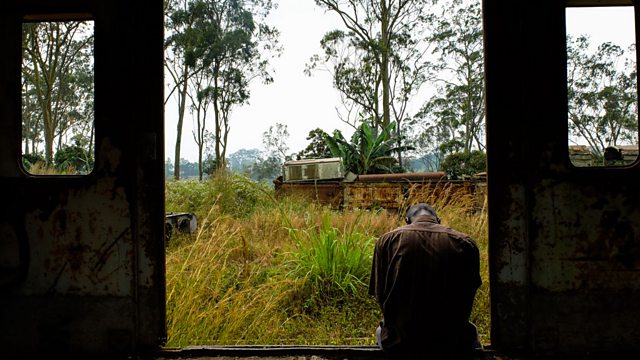HIV in Africa
New data on HIV in Africa; A Decade of Sub-Saharan African Science; Pesticide Problems; Is Climate Change to blame for the Californian Drought?
Where exactly on the African continent did HIV begin to spread easily between humans? This is a question that scientists have debated over for some time. A new study has managed to trace the origins of HIV to Kinshasa, now the capital of the Democratic Republic of Congo, in the early 1920s. The scientists were also able to shed some light on how the disease spread with their research suggesting that it moved quickly through transportation networks that sprawled out of Kinshasa when it became a booming town for trade and the capital in 1923. Professor Oliver Pybus from the University of Oxford in the UK and Professor Philippe Lemey from the University of Leuven in Belgium explain how their team reconstructed the early history of HIV.
A Decade of Sub-Saharan African Science
The output and impact of science, technology, engineering and mathematics (STEM) research are crucial indicators of a region's economic and development success. A newly published World Bank and Elsevier report examines Sub-Saharan Africa’s STEM research performance over a 10 year period from 2003 to 2012 and reveals that despite an overall increase in research output, particularly in health sciences, the region still lags significantly behind that of other emerging economies. George Lam, analytical product manager and data scientist for Elsevier, and Andres Blom, the World Bank’s lead economist on the report have just announced its publication in Washington DC.
Pesticide Problems
Recommendations for the acceptable limit of pesticide residues in food and agricultural products moving through international trade markets were made recently by the United Nations. However, experts claim that continued use of old and highly hazardous pesticides are still a pressing problem in developing countries. Science in Action's environment correspondent Navin Singh Khadka reports from the farms of Punjab in India.
Is Climate Change to blame for the Californian Drought?
A persisting high pressure weather system above California appears to be causing the drought in the region and new research claims it is there because of increased in greenhouse gases. Scientists have noticed how this unusual high pressure system is replacing California's typically wet and rainy winter seasons with warmer weather. Daniel Swain, a PhD student at Stanford University, California, is the lead author of this new paper – he explains how, using computer models, the team found that these high pressure systems were three times more likely to occur in conditions with higher amounts of greenhouse gases.
(Photograph taken in Mbanza-Ngungu, Democratic Republic of Congo © Carl Gierstorfer)
Presenter: Jack Stewart
Producer: Ania Lichtarowicz
Last on
More episodes
Previous
Next
Chapters
-
HIV in Africa
Scientists trace the origins of HIV in Africa
Duration: 05:47
A Decade of Sub-Saharan African Science
A new World Bank and Elsevier report studies the state of Africa’s Science base
Duration: 08:22
Pesticide Problems
The use of harmful pesticides may still be a problem in developing countries
Duration: 05:59
Is Climate Change to blame for the Californian Drought?
Research suggests increased greenhouse gases may be contributing to California's drought
Duration: 05:07
Broadcasts
- Thu 2 Oct 2014 18:32GMT�鶹������ҳ��� World Service Online
- Fri 3 Oct 2014 01:32GMT�鶹������ҳ��� World Service Online
- Fri 3 Oct 2014 08:32GMT�鶹������ҳ��� World Service Online
- Mon 6 Oct 2014 03:32GMT�鶹������ҳ��� World Service Online
Podcast
-
![]()
Science In Action
The �鶹������ҳ��� brings you all the week's science news.


